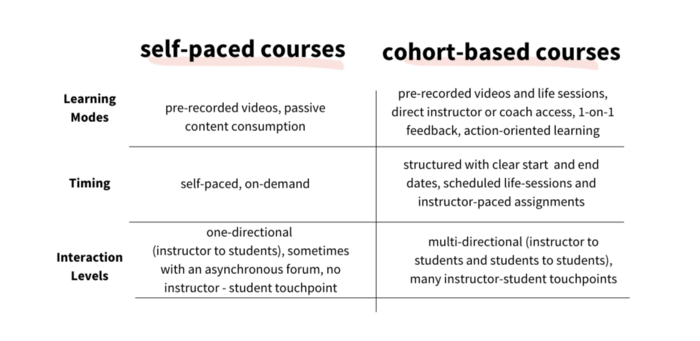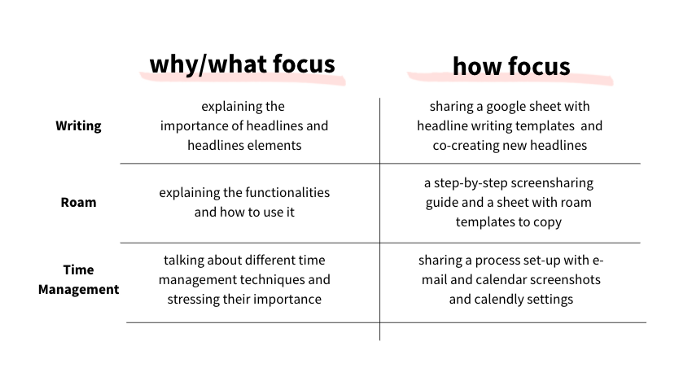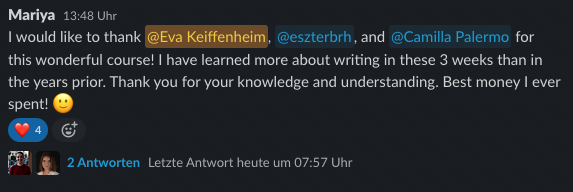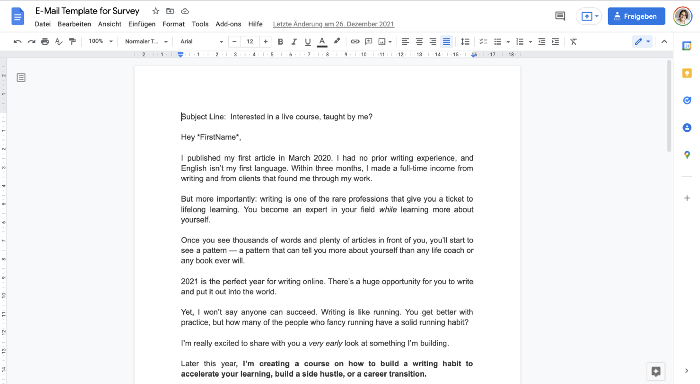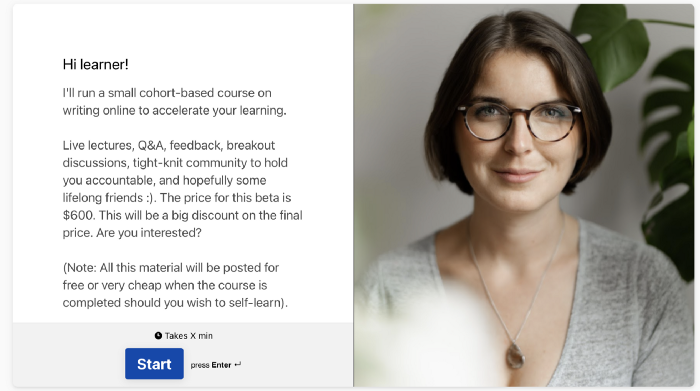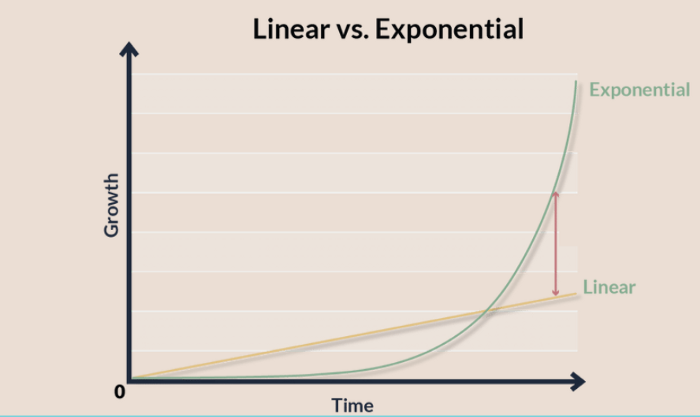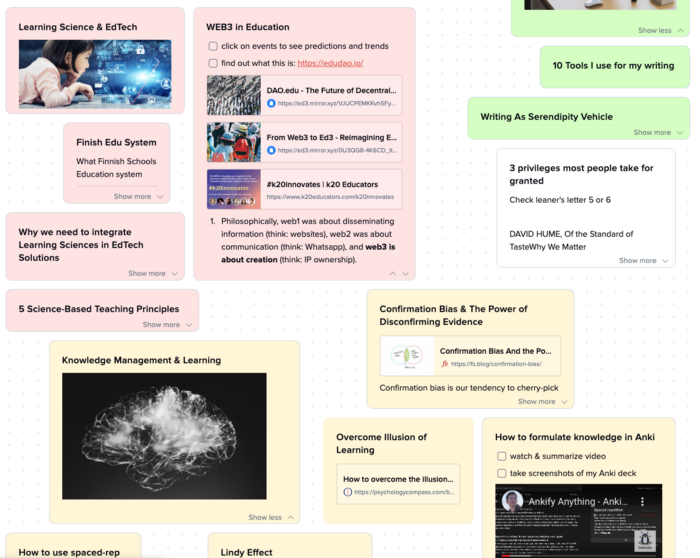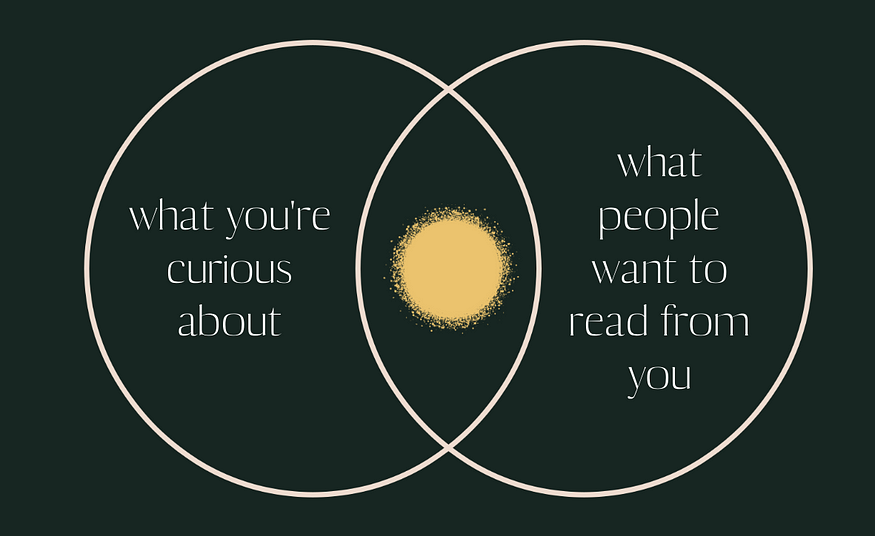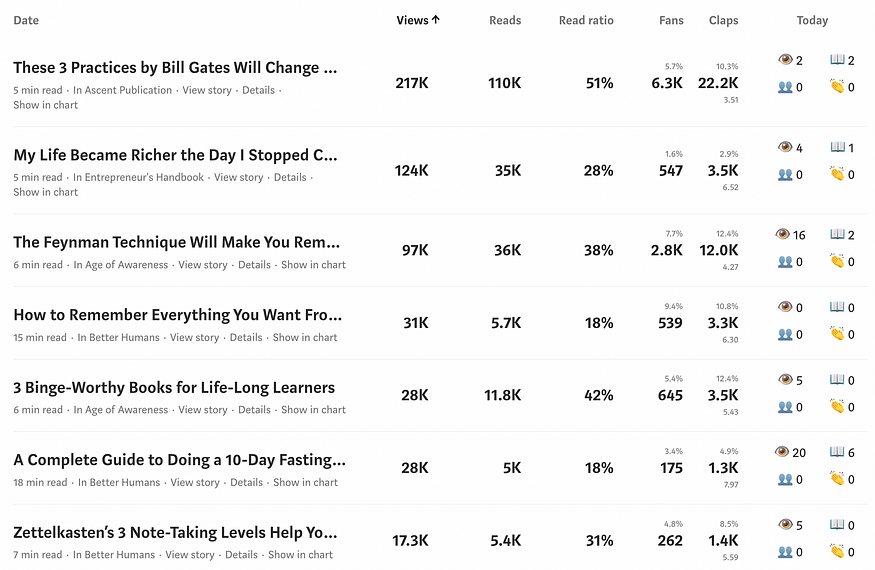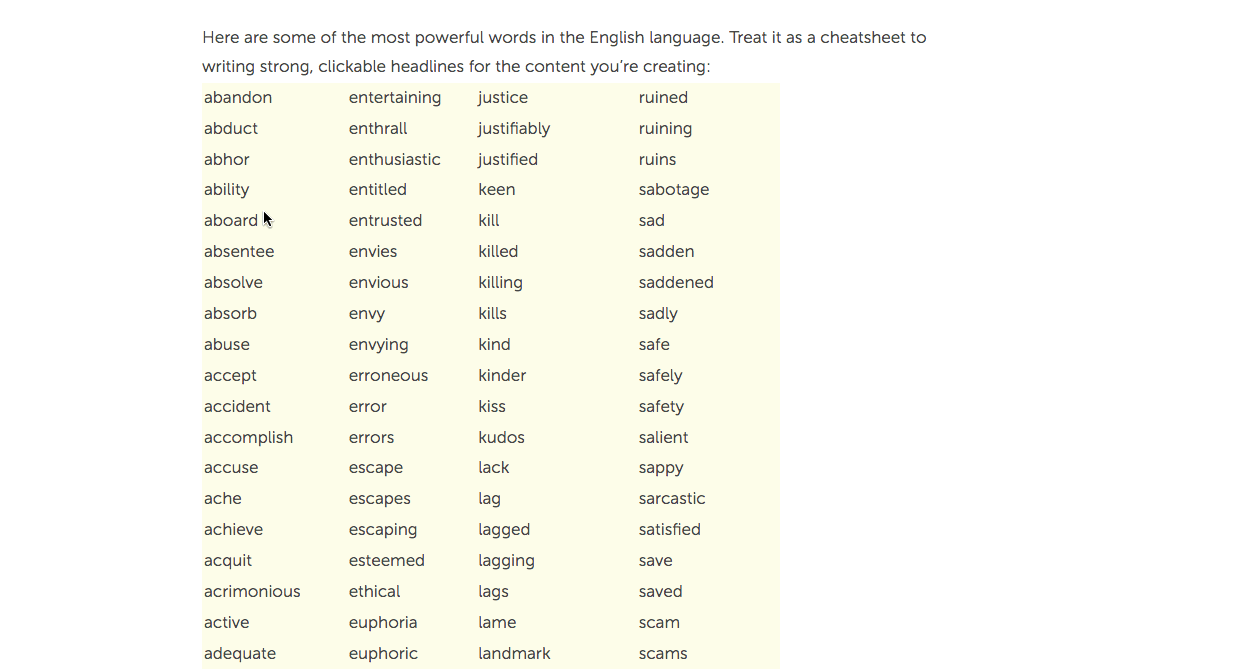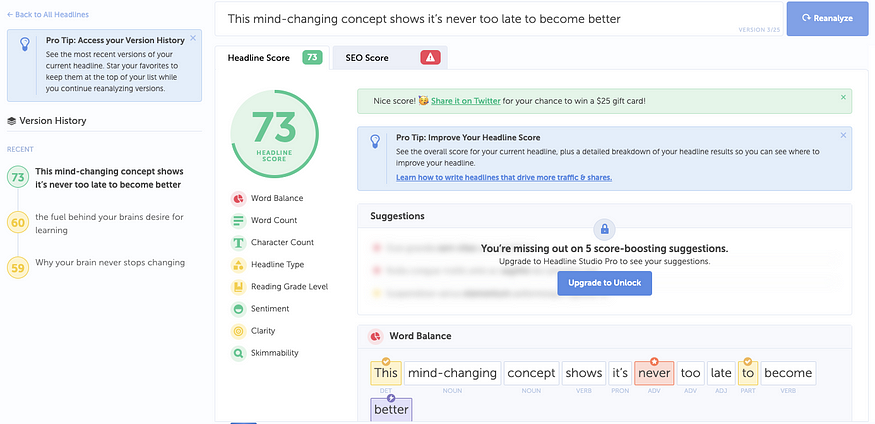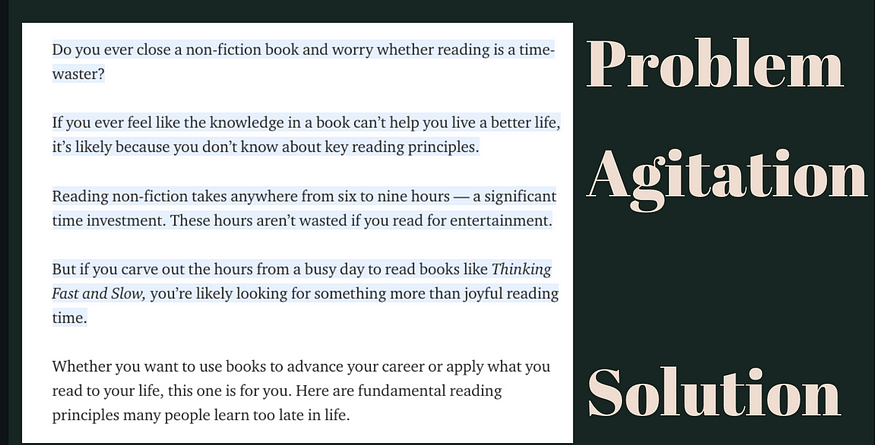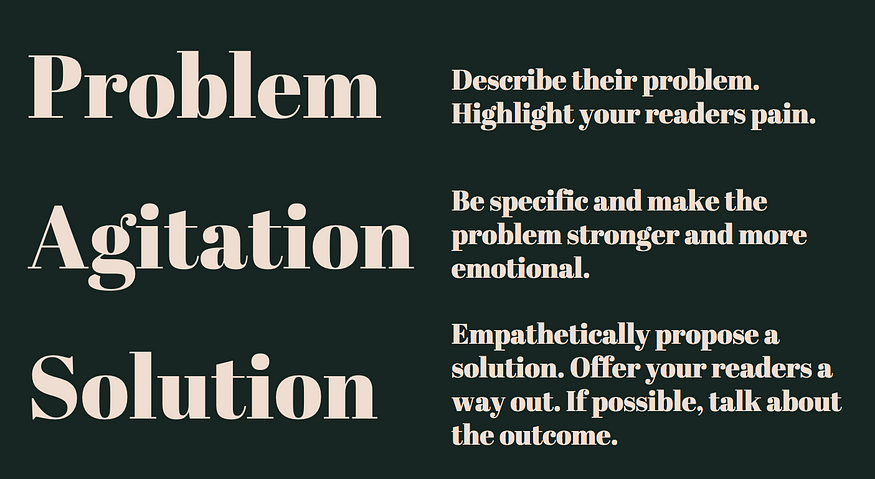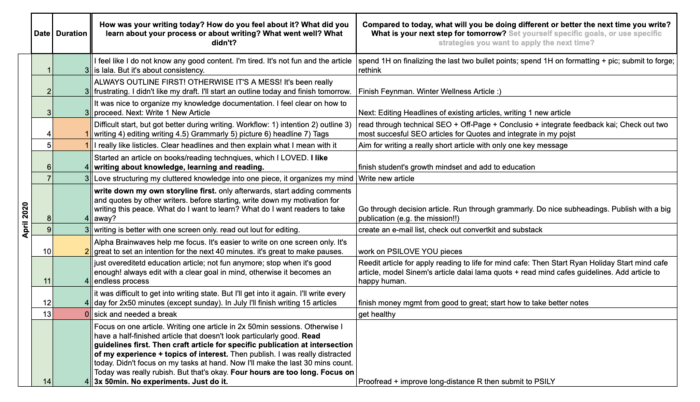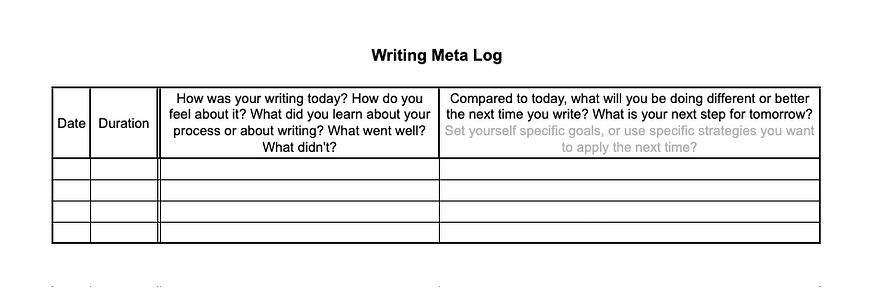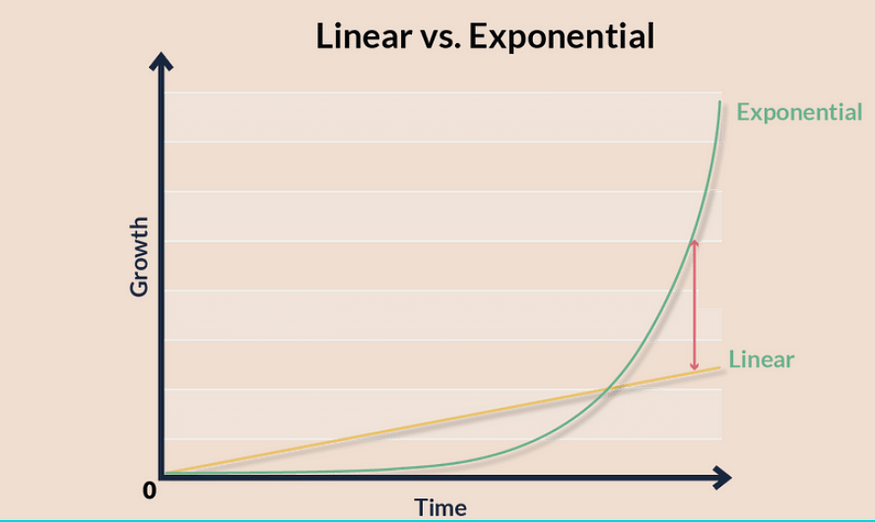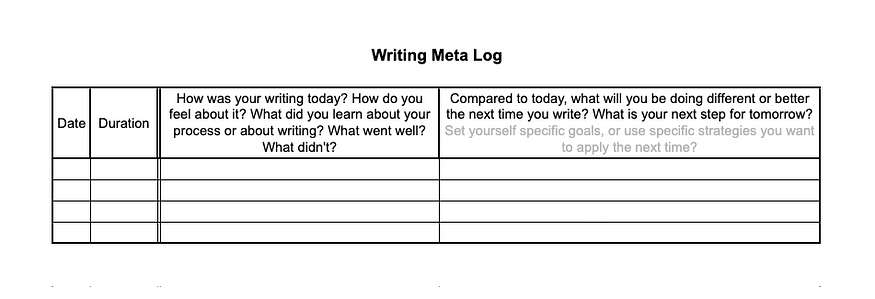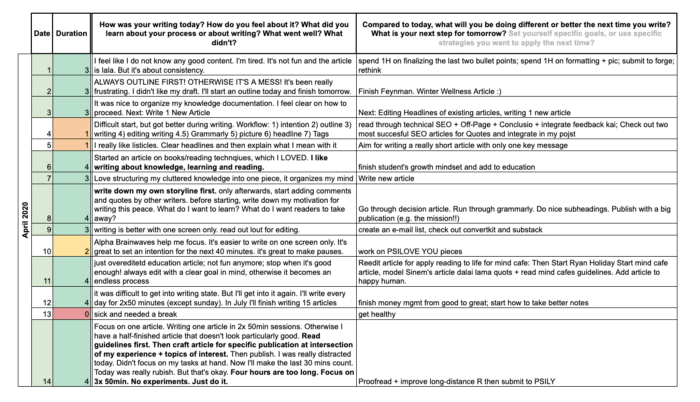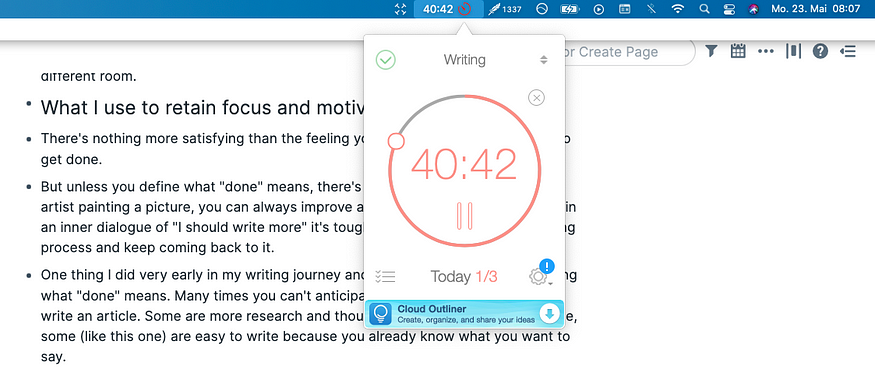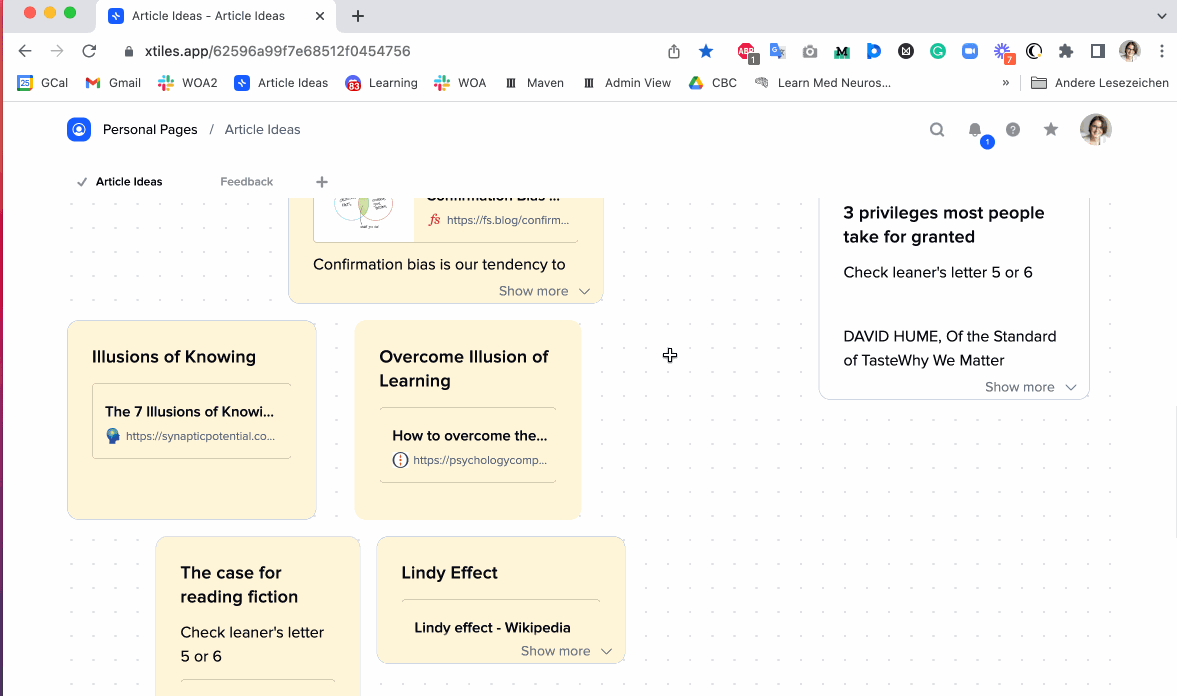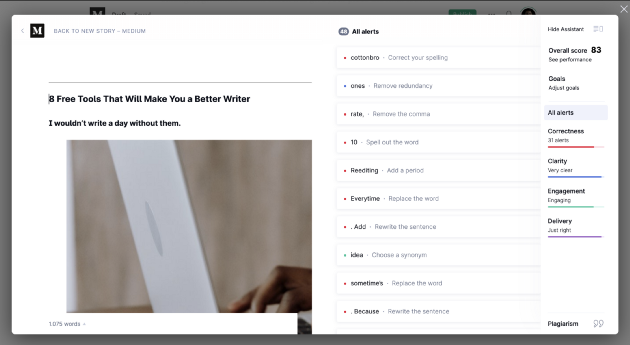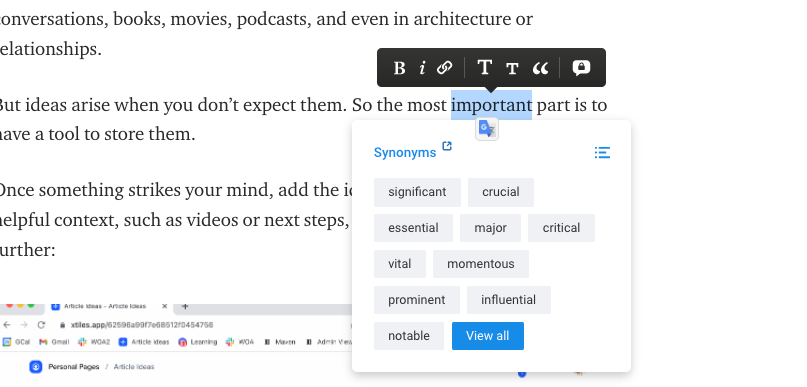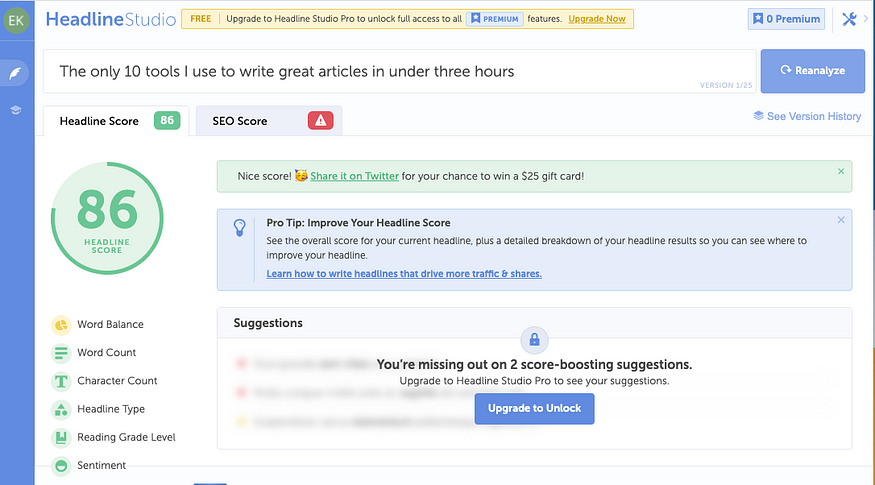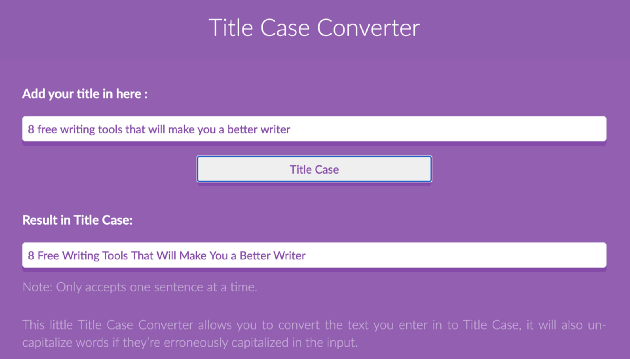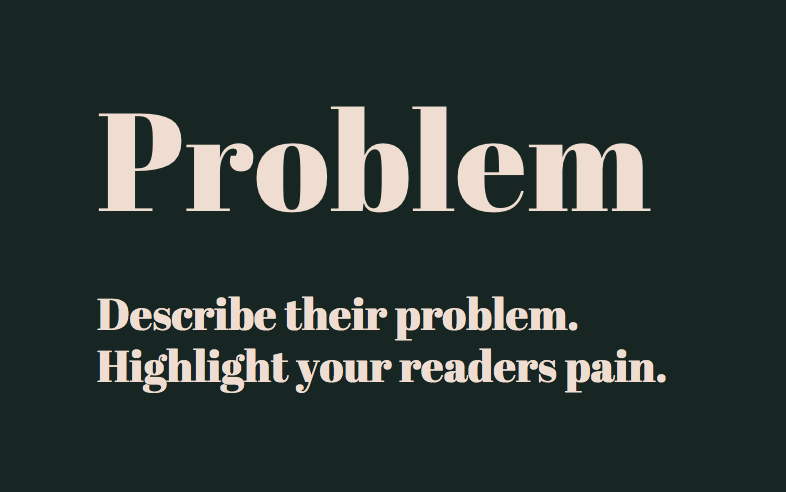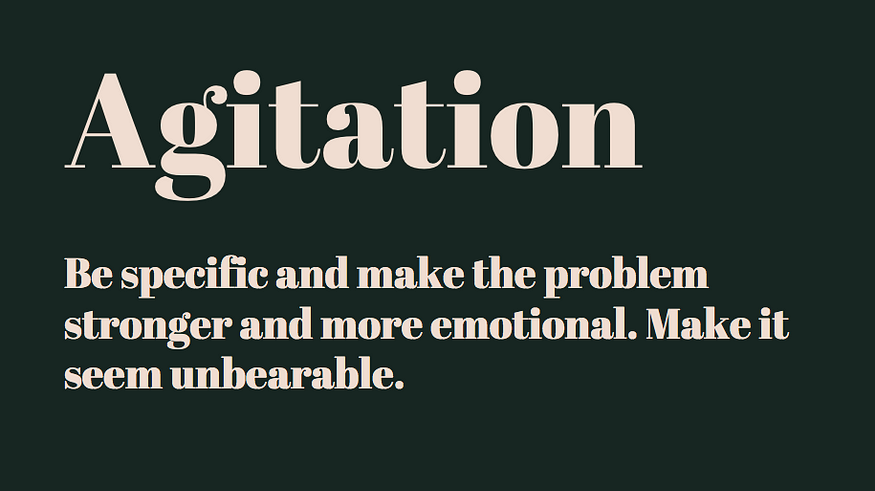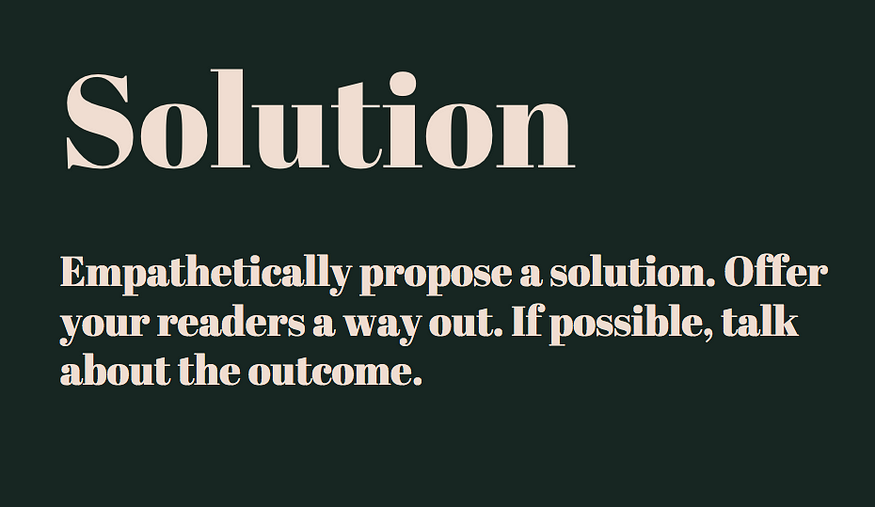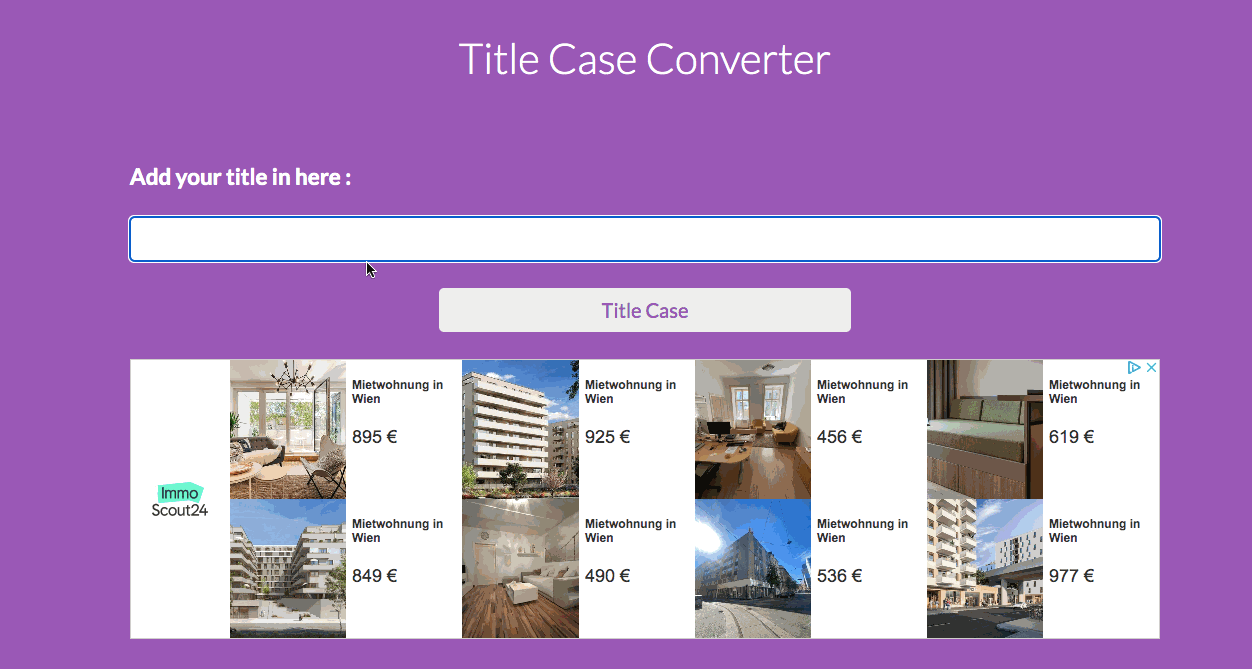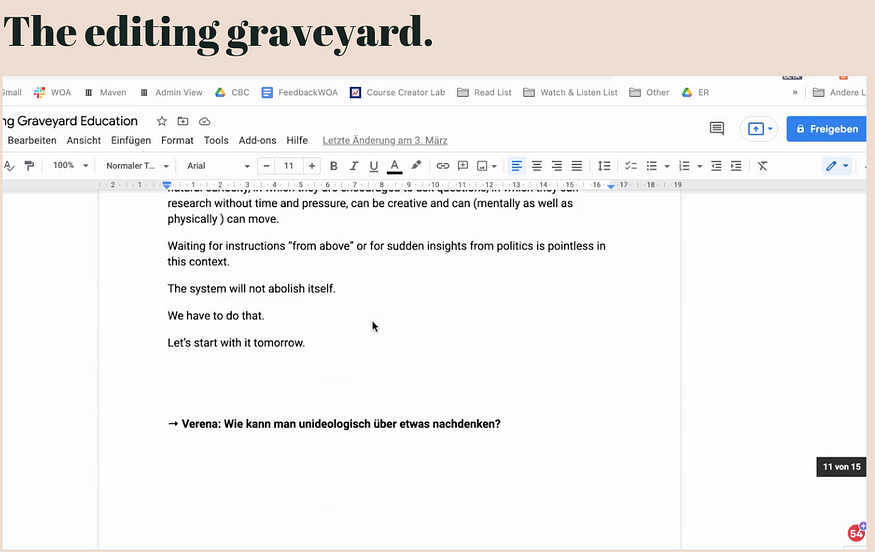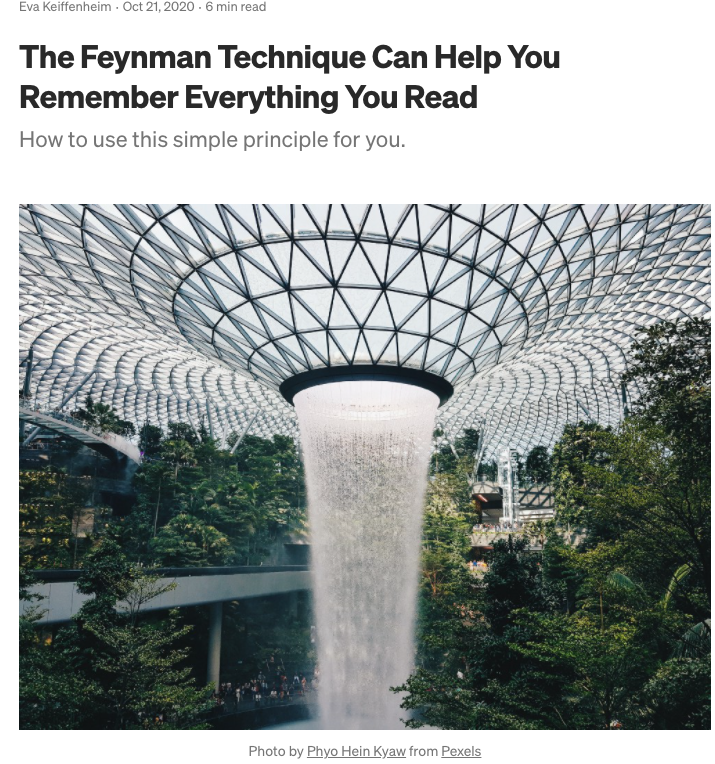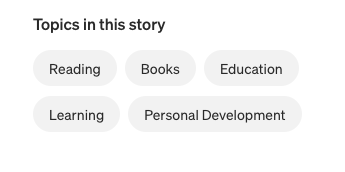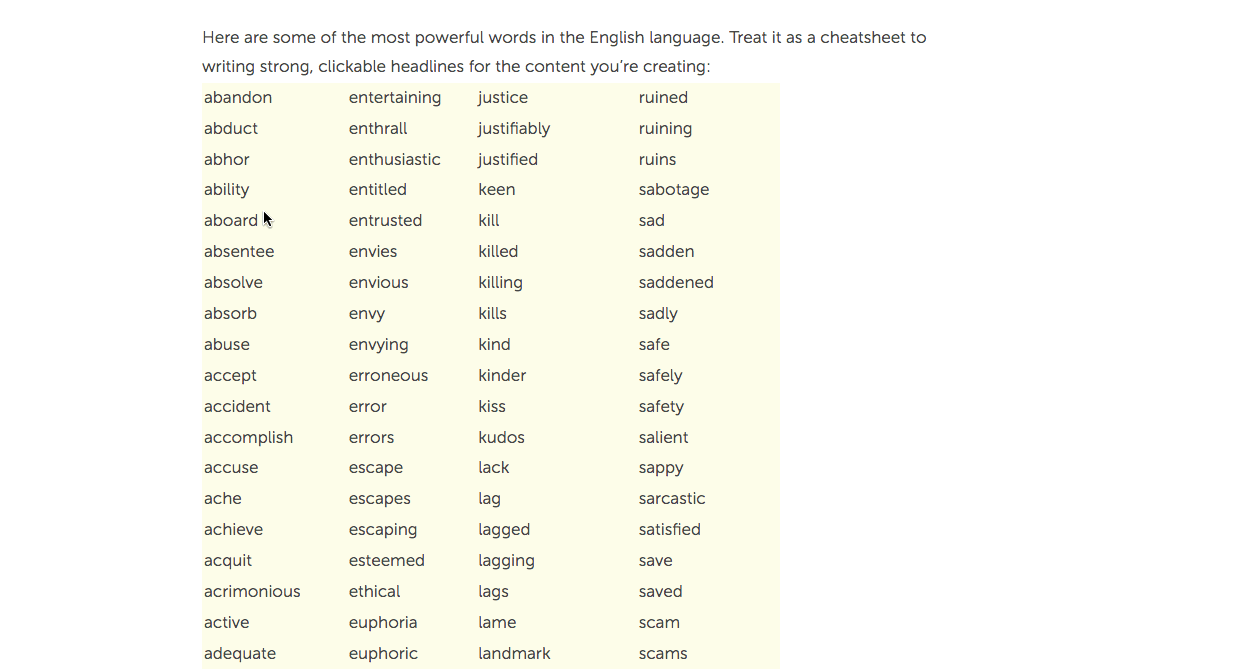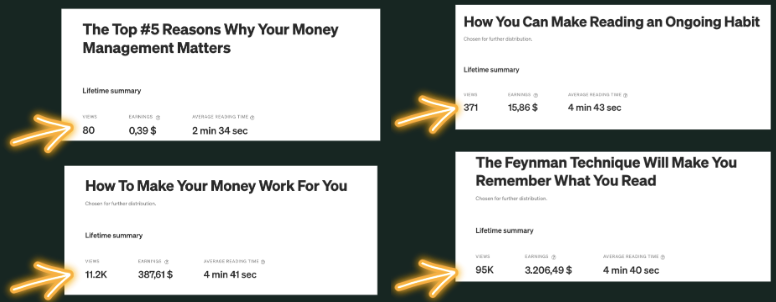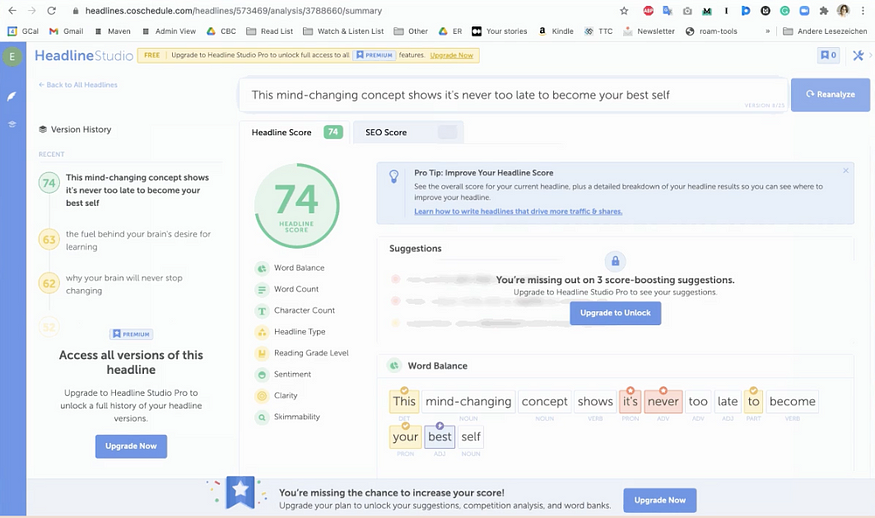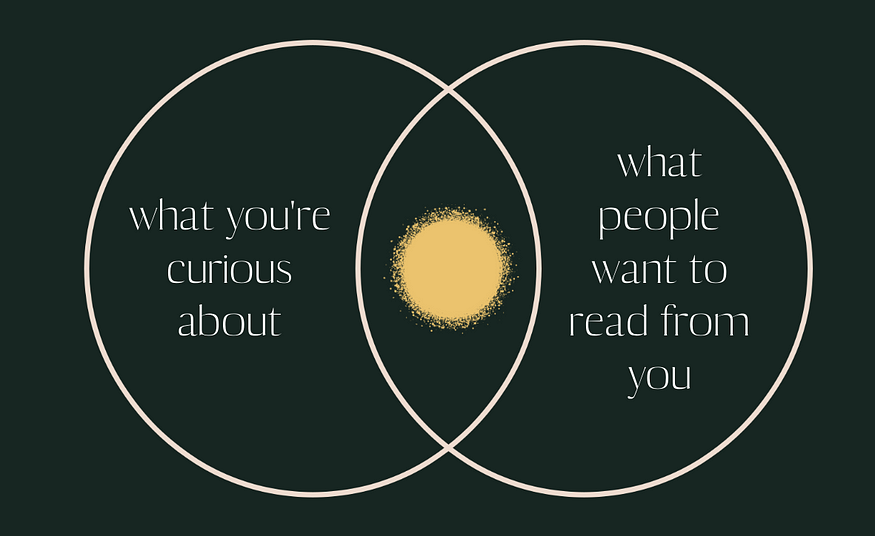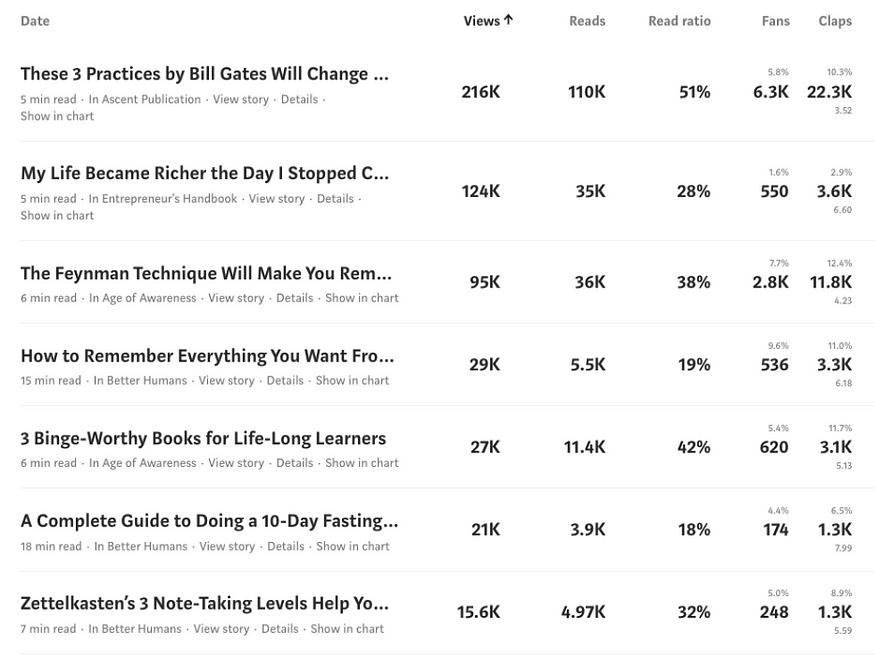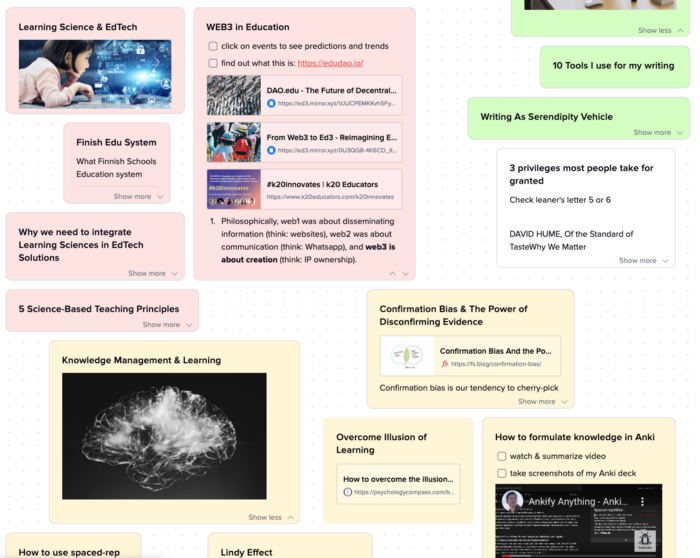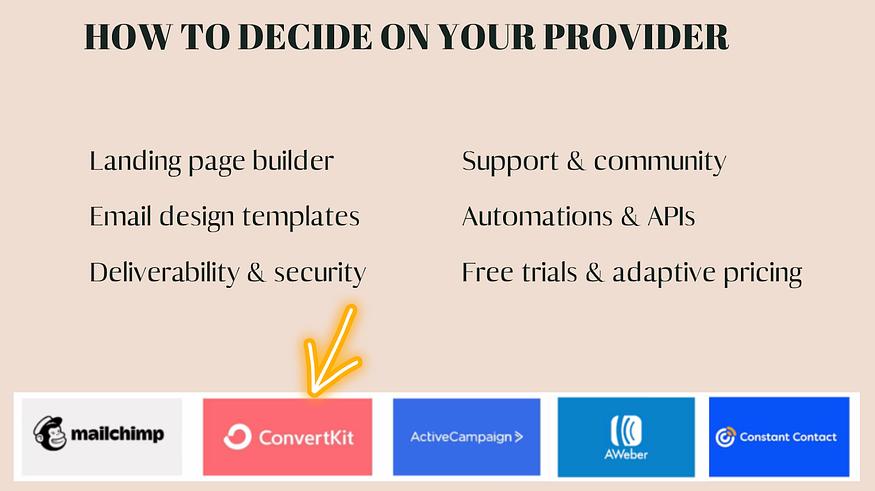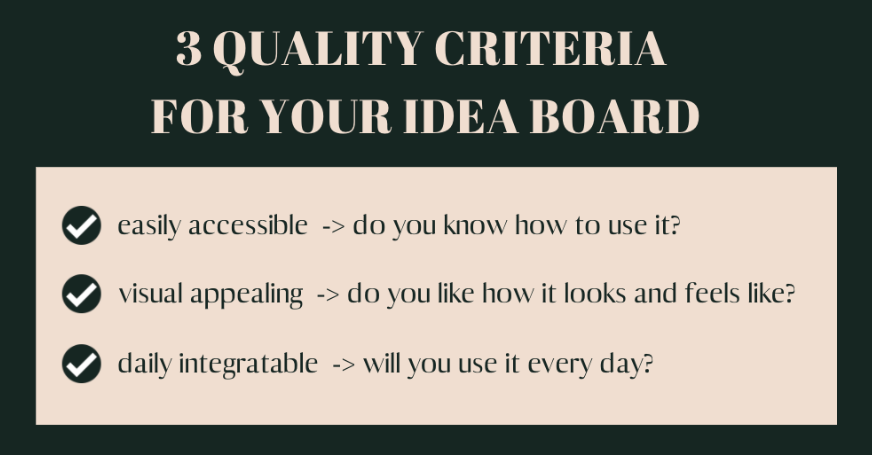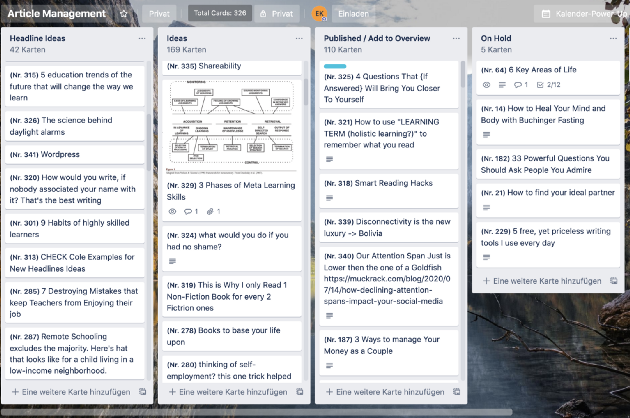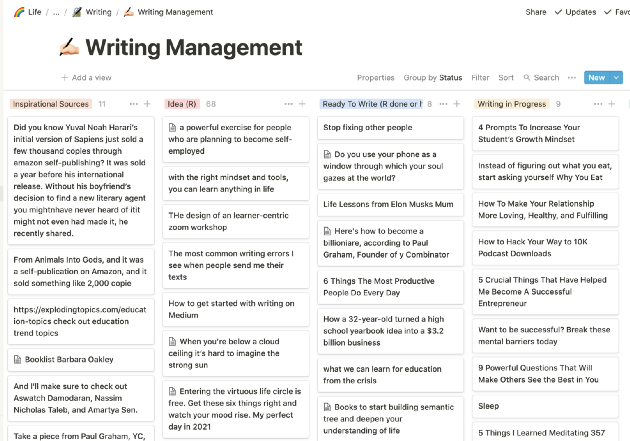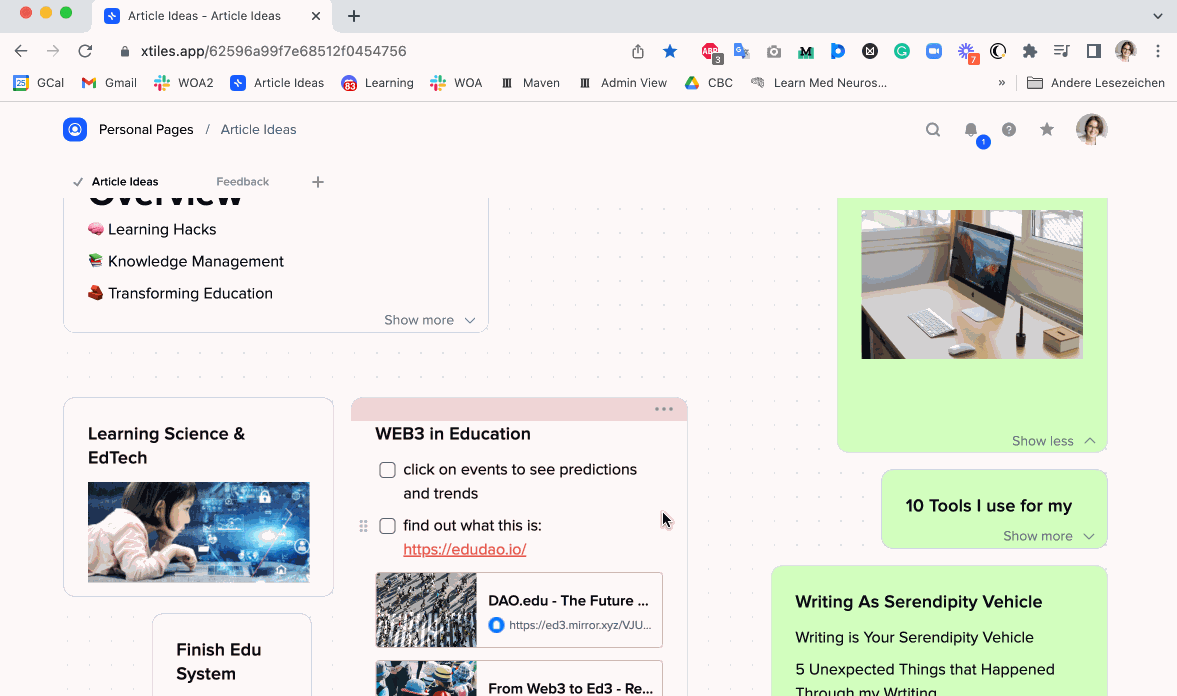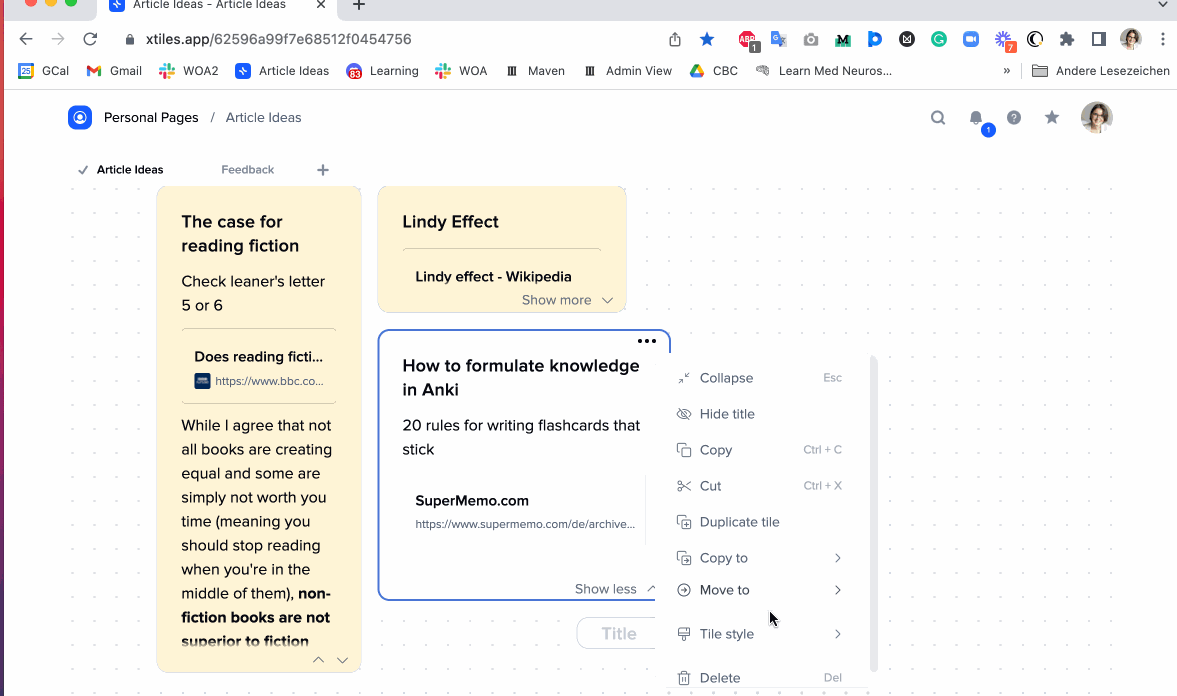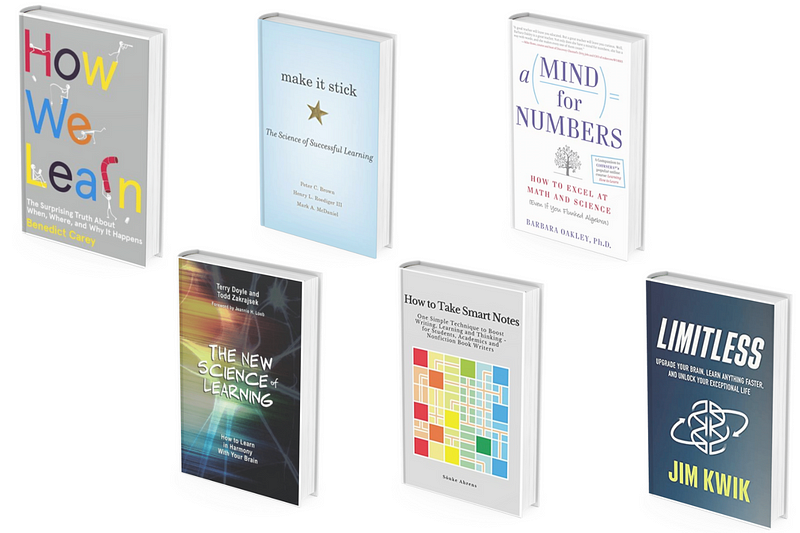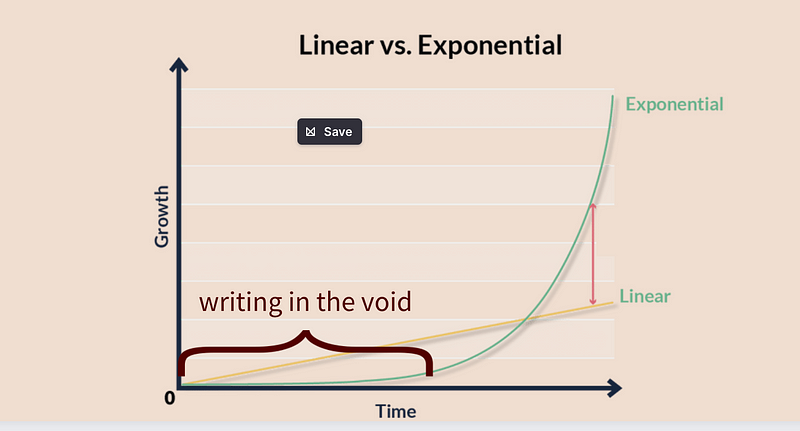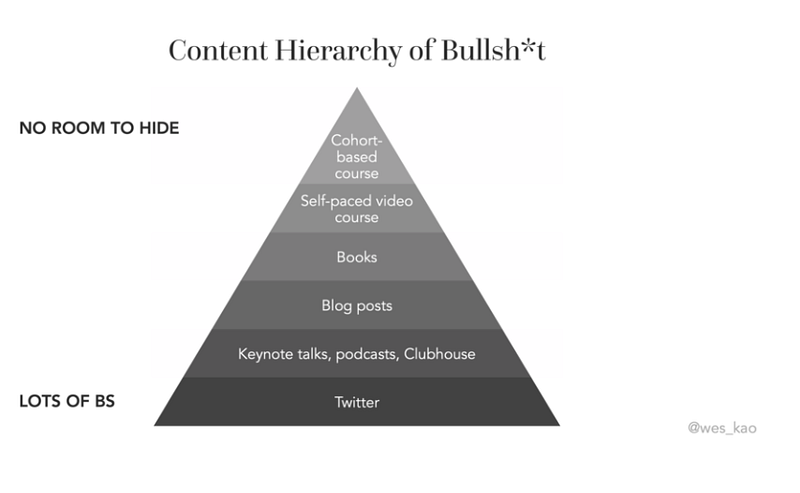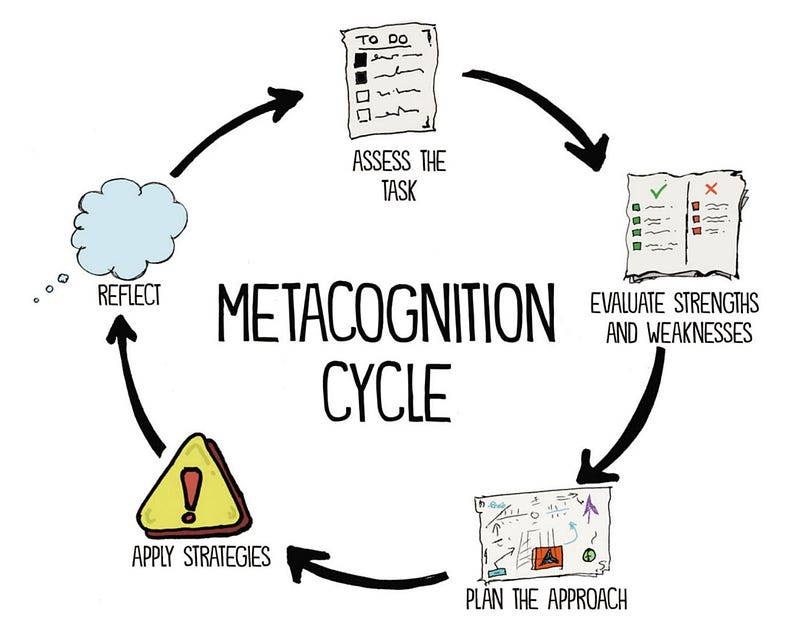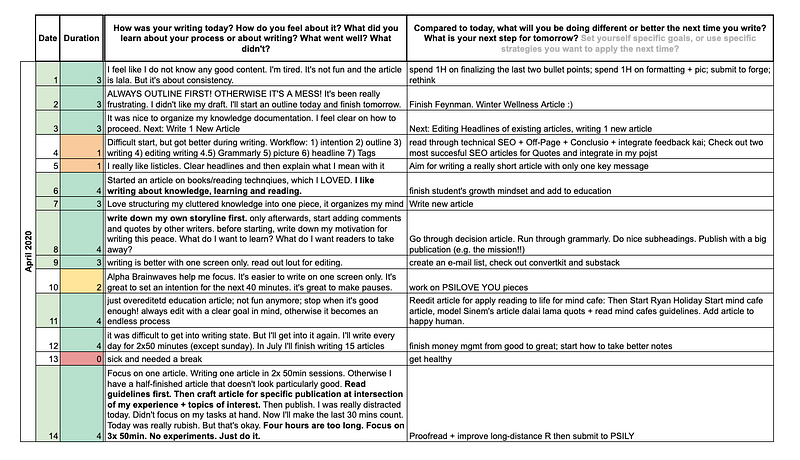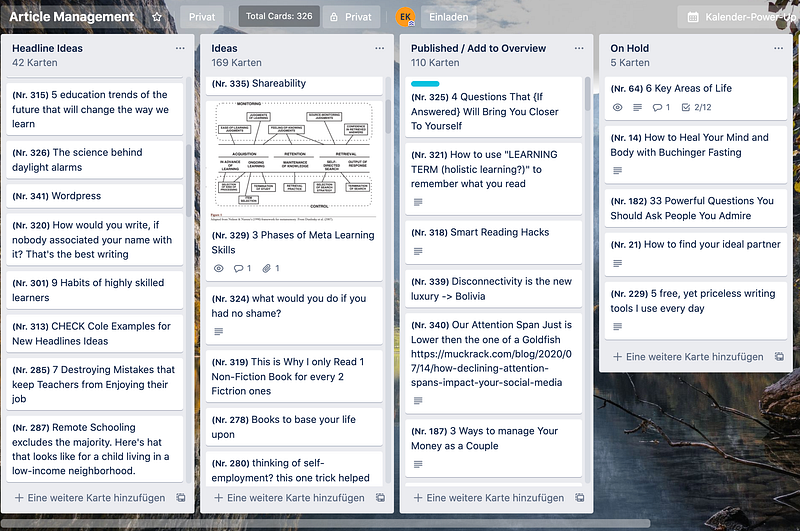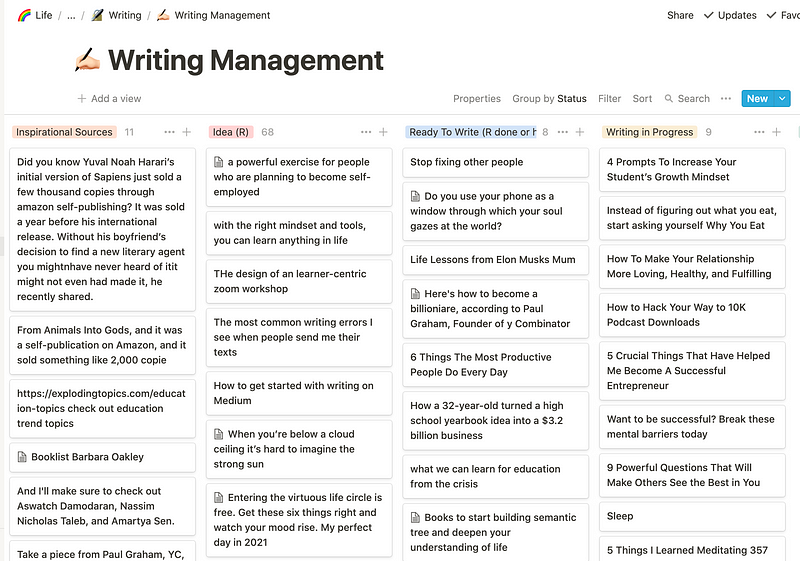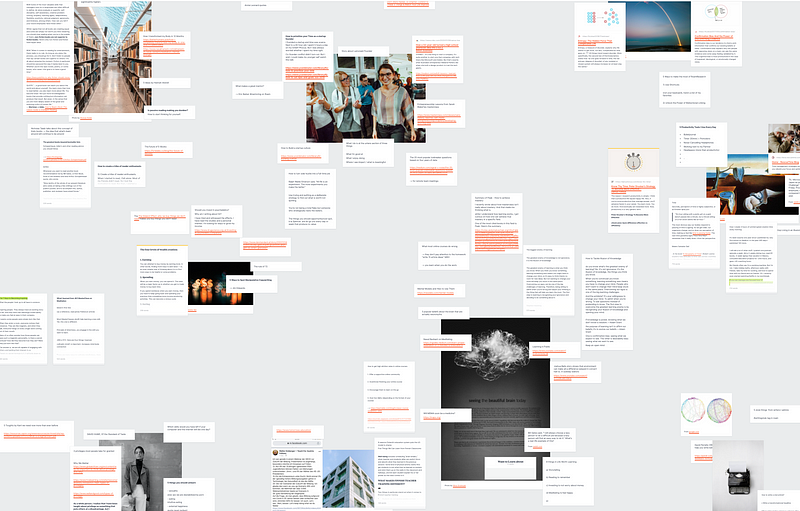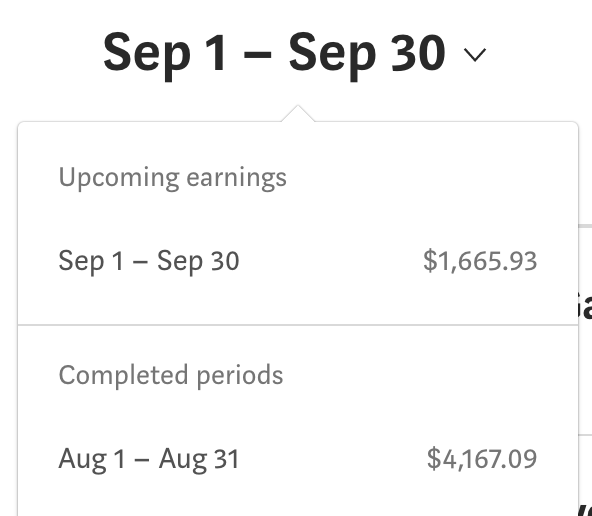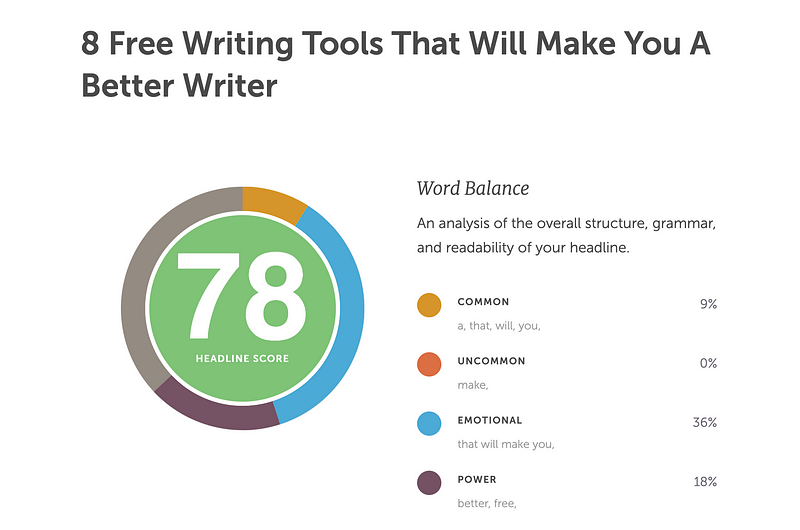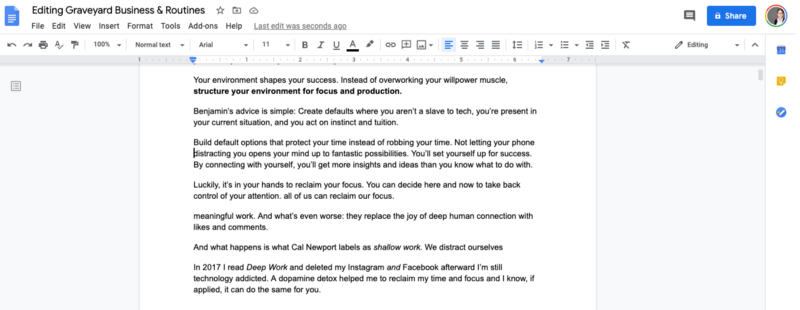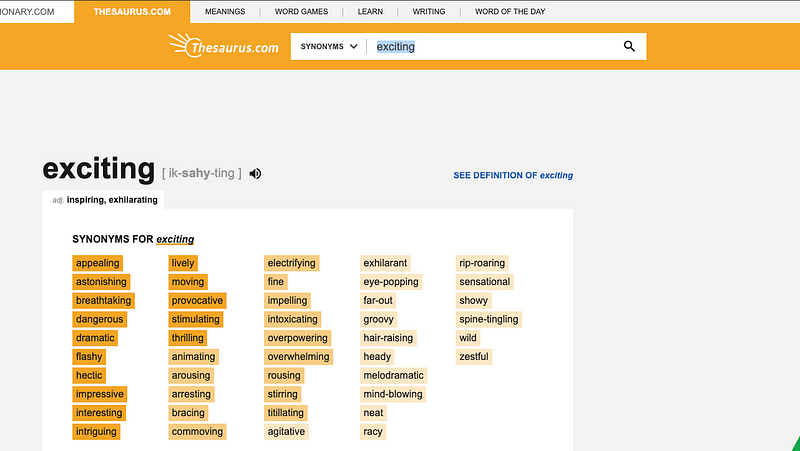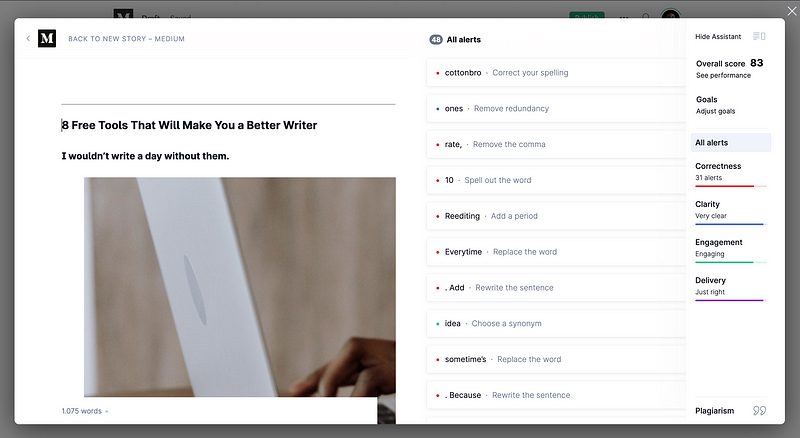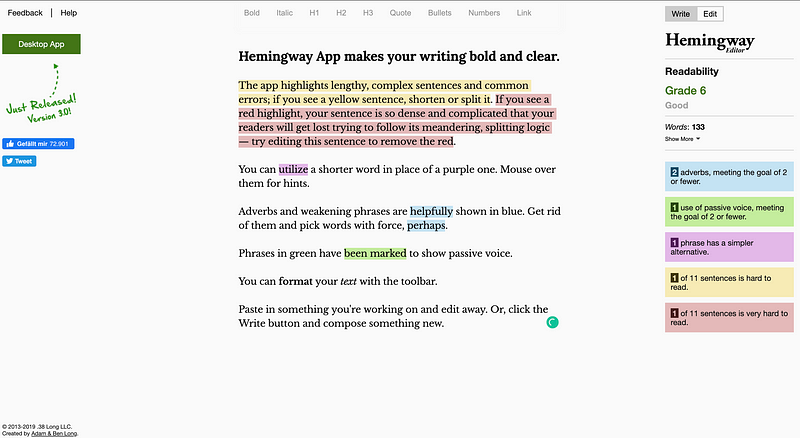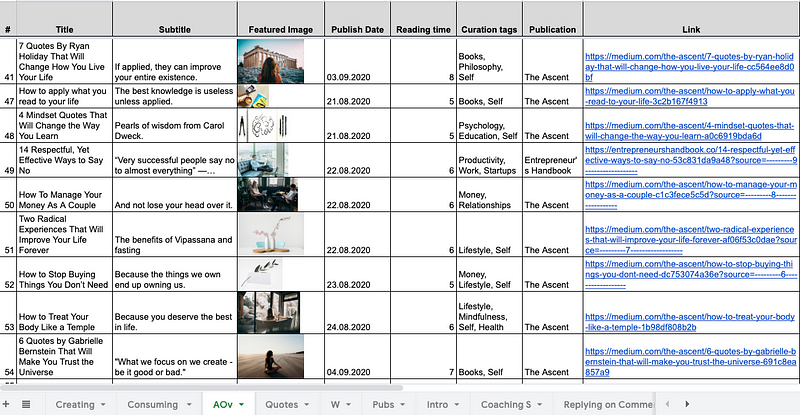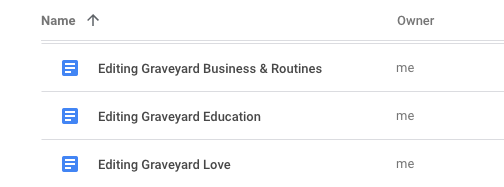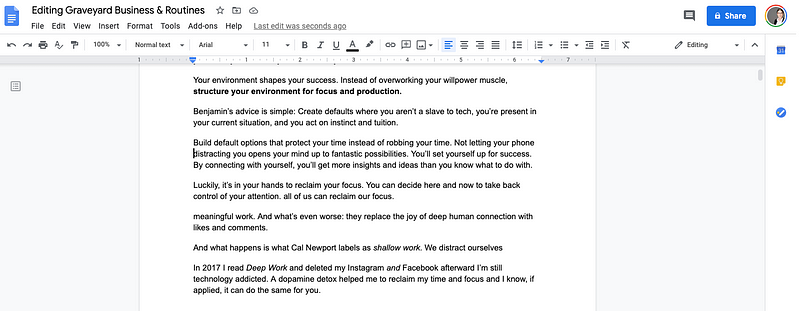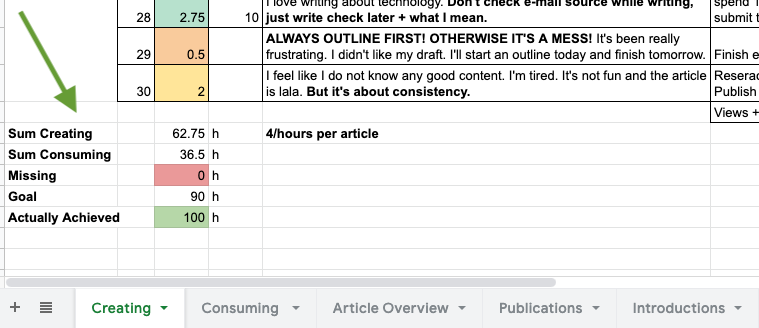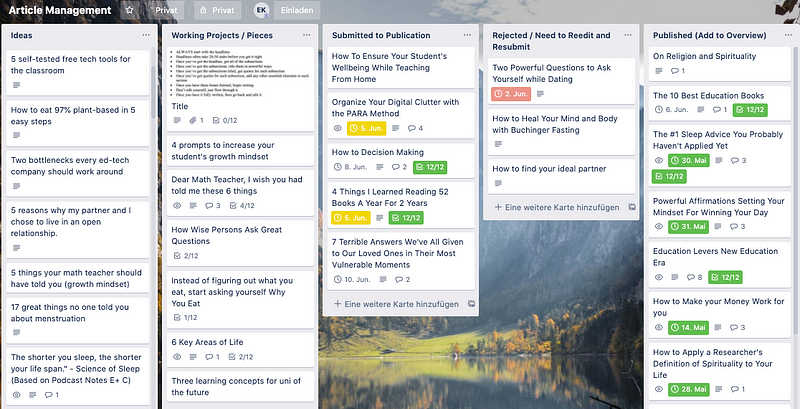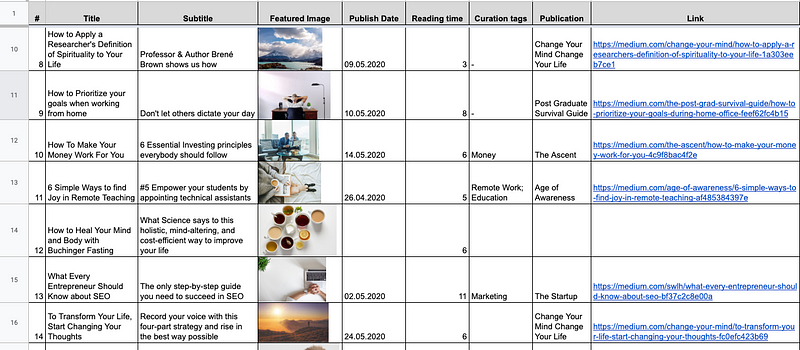Creating my dream job while working four hours a day.

Many online creators complain about how hard it is to make a living from writing online. But if you take a more strategic approach, it can become easier.
Back in 2020, I had a couple of +$5,000 months on this platform, primarily through shallow buzzword articles like this one:
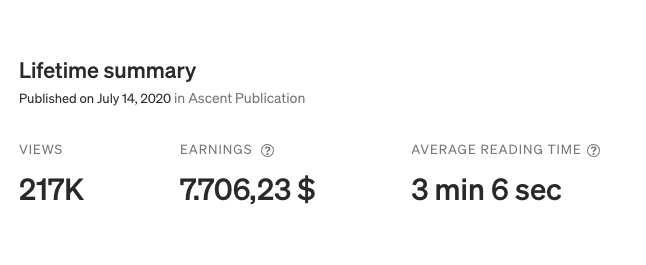
This article took me a bit under three hours to write.
Money printing, huh?
But the truth is most earnings from my articles on Medium look like the one below, or even worse.

If I had relied on making a living through this platform alone, I could have never made a living as a solopreneur.
In this story, I share how I built a six-figure business on the back of writing and what you can apply to your journey.
Master These Two Areas to Unlock the Rest
If you want to build a sustainable online business on the back of writing, there are two areas you want to pay attention to — learn how to write articles people want to read and become a subject expert.
Write articles people actually want to read
When you start writing online, you have no clue what you need to do so that people read your work. Many new writers start with an illusion of superiority. They expect their first article to be a hit (including me back in April 2020).
New writers know so little they fail to see what they don’t know. It’s not as simple as having an idea, writing it down, publishing it, and watching it reach millions of readers.
Moving from idea generation to a well-articulated article requires multiple sub-skills you must master. For example, idea generation and selection; headline, hook, and paragraph title writing; editing; reader-centricity; formatting; consistency; and more.
I invested in writing courses and spent hundreds of hours experimenting and learning. (I am now offering a live writing course myself, scholarship application here.)
By the end of May 2020, I had spent around 200 hours writing online, earning roughly $0.07 an hour. I kept going, although I had zero followers and was invisible online.
Becoming a decent writer requires discipline and constant improvement. It’s hard to keep going when no one would care if you stopped. So many writers don’t stick around for long enough.
But if you’re willing to put in the effort, keep learning, and consistently publish high-quality content (I published 176 articles in my first 13 months of writing), you will become a good writer.
But good writing isn’t enough. Most likely, this platform alone won’t generate enough of your income for you to stick around. That’s why you want to focus on a second area.
Become a subject expert
One side effect of writing many writers ignore is that when you share what you learn and know for long enough, people will recognize you as an expert.
My deep-dive articles on learning and education have attracted most of my ongoing clients (more on that in the next section).
So how do you become a subject expert? There are three repeatable steps:
- Pick a topic or area that you feel curious about
- Learn and read about the topic
- Synthesize what you learn in great articles (this requires you’ve mastered the first skill — writing articles people want to read)
When selecting a topic, don’t chase the next big trend. Focus on a topic you feel genuinely drawn to.
Pick a topic or industry that you could imagine working for. For example, I chose education and learning, and Julia Blum chose psychedelics.
Don’t pick your area of expertise before you have mastered writing. Practice the craft with whatever comes to your mind. You want to explore anything that potentially excites you.
In the first months, I wrote about nutrition, relationships, spirituality, and much more. Monitor what you enjoy writing and feel curious about exploring even further. As widely-read blogger Mark Manson says:
“Until you’ve written 100 posts, you generally have no clue what you enjoy writing about or what people enjoy reading from you.”
Diversifying your income streams
In 2020, when the first potential client asked me about my hourly rate, I replied with the only reference point I had — my last student job. (Yes, in 2020, I sold my first 100 hours of working as a writer and researcher for $20/hour).
Less than three years into my online writing journey, my day rate is $1,400 (with a discount for non-profit organizations).
How?
Five months into my online writing journey, I started to receive LinkedIn messages like this one 3 or 4 times every week.

I didn’t have a homepage.
I didn’t advertise any services.
Hell, I didn’t even have a fixed day rate.
But the better I became at writing, and the more I published high-quality articles on my key subject area, the more requests filled my inbox. And this never stopped.
I still don’t have a proper homepage.
I still don’t do sales calls.
I publish only a couple of articles a month on Medium.
And yet, I have sold my available work days until the end of July. My projects vary — from writing and research to consulting, project management, public speaking, and advisory roles, but all within the realm of learning and education.
Naval Ravikant says: “You’re never going to get rich renting out your time. Earn with your mind, not your time.”
Online entrepreneurs can indeed become wealthy by establishing systems that make money independent from time. They build products without costs for selling additional units such as books, online courses, media, movies, and code.
But I realized I don’t care about this truth. Because my life became richer the day I stopped optimizing for passive income.
I am fully committed to a few projects aligned with my purpose and long-term goal of creating learning and education systems that allow all learners — independent of their socioeconomic background — to thrive.
Attracting clients through writing has been the key to unlocking this life. It created tremendous opportunities and helped me build income streams I couldn’t imagine when I started three years ago. And I am convinced it can do the same for you, even if your journey might look different.

Final Words
Writing has become and will remain integral to my life. I’m deeply grateful for the insight, people, and projects writing has brought to me. I’ve created a life I enjoy living, and this reality wouldn’t have been possible without writing.
Most likely, writing alone won’t generate an income to live from, but it can open up incredible opportunities and help you create your dream life.
Whether searching for more purpose in what you’re doing, feel as if you have not yet unlocked your professional potential, or are looking for ways to have a higher income, know that writing can be the tool to help you get there.
Writing does not remove systemic barriers and privileges. Timing, luck, and other factors determine whether you can up-level your life through writing.
But when you consistently commit to writing and publishing online, you put yourself out there and showcase your work. If you stick with it long enough and become good along the way, people will recognize you as an expert, bringing new opportunities along your way.
Ready to fuel your career through writing?
Subscribe to the bi-weekly write letter to get inspired, or join the next cohort of my writing online accelerator (scholarship application here).



